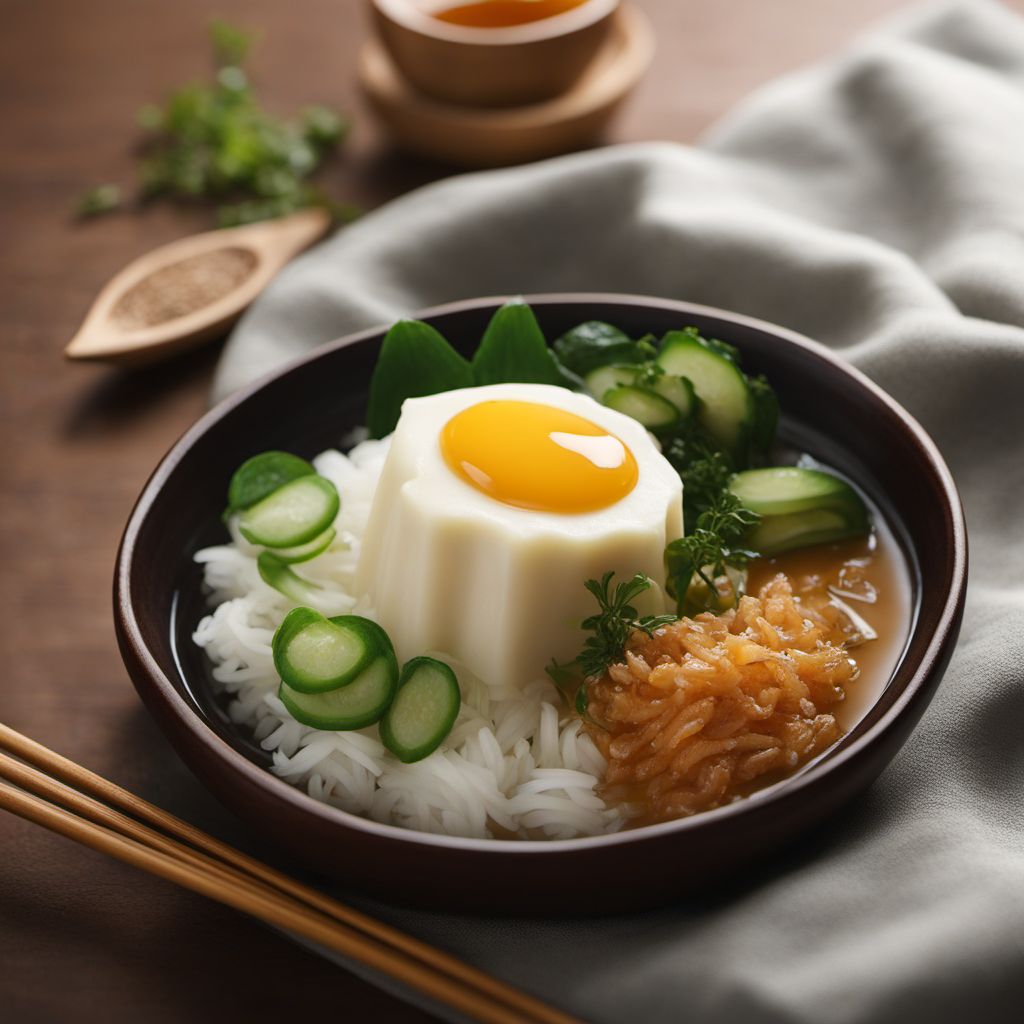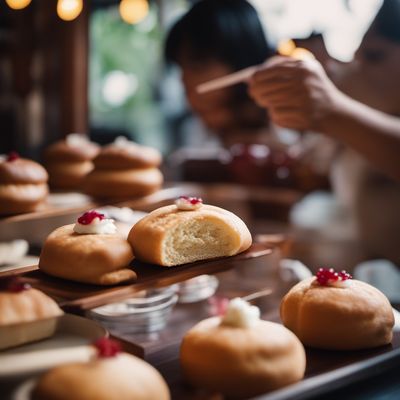
Recipe
Zhejiang-style Onsen Tamago
Silky Egg Delight: Zhejiang-style Onsen Tamago
4.6 out of 5
Indulge in the delicate flavors of Zhejiang cuisine with this exquisite adaptation of the traditional Japanese dish, Onsen Tamago. This Zhejiang-style version of the dish elevates the simplicity of a perfectly cooked egg, infusing it with the subtle essence of the region's culinary heritage.
Metadata
Preparation time
10 minutes
Cooking time
7 minutes
Total time
47 minutes (including marinating time)
Yields
4 servings
Preparation difficulty
Easy
Suitable for
Vegetarian, Pescatarian, Gluten-free, Dairy-free, Low-carb
Allergens
Eggs, Soy
Not suitable for
Vegan, Paleo, Nut-free, Egg-free, High-protein
Ingredients
In this Zhejiang-style adaptation, we infuse the Onsen Tamago with the flavors of the region. The traditional Japanese dish is enhanced with a fragrant soy-based sauce, adding a touch of umami to the delicate flavors of the egg. This adaptation embraces the simplicity and elegance of Zhejiang cuisine, allowing the natural taste of the egg to take center stage while incorporating the subtle flavors that define the region. We alse have the original recipe for Onsen tamago, so you can check it out.
-
4 large eggs 4 large eggs
-
2 tablespoons soy sauce 2 tablespoons soy sauce
-
1 tablespoon rice vinegar 1 tablespoon rice vinegar
-
1 teaspoon sugar 1 teaspoon sugar
-
1 teaspoon sesame oil 1 teaspoon sesame oil
-
1 teaspoon finely grated ginger 1 teaspoon finely grated ginger
-
1 green onion, thinly sliced 1 green onion, thinly sliced
Nutrition
- Calories (kcal / KJ): 70 kcal / 293 KJ
- Fat (total, saturated): 4.8g, 1.3g
- Carbohydrates (total, sugars): 1.2g, 0.6g
- Protein: 5.5g
- Fiber: 0.1g
- Salt: 1.8g
Preparation
-
1.Fill a pot with water and bring it to a gentle simmer over medium heat.
-
2.Carefully place the eggs into the simmering water and cook for 7 minutes.
-
3.While the eggs are cooking, prepare an ice bath by filling a bowl with cold water and ice cubes.
-
4.After 7 minutes, remove the eggs from the pot and immediately transfer them to the ice bath to stop the cooking process. Let them cool for 5 minutes.
-
5.In a small bowl, whisk together the soy sauce, rice vinegar, sugar, sesame oil, and grated ginger until well combined.
-
6.Gently peel the cooled eggs and place them in a shallow dish.
-
7.Pour the soy-based sauce over the eggs, ensuring they are fully coated. Let them marinate for at least 30 minutes, or refrigerate overnight for a more intense flavor.
-
8.Before serving, garnish with thinly sliced green onions.
Treat your ingredients with care...
- Eggs — Use fresh eggs for the best results. Make sure to gently place them in the simmering water to avoid cracking.
Tips & Tricks
- For a twist, try adding a splash of Chinese black vinegar to the soy-based sauce for a deeper flavor.
- Experiment with different toppings such as toasted sesame seeds or chili flakes for added texture and heat.
- Adjust the marinating time to your preference. Longer marinating times will result in a more pronounced flavor.
Serving advice
Serve the Zhejiang-style Onsen Tamago as a side dish alongside steamed rice or noodles. It can also be enjoyed on its own as a light and satisfying snack.
Presentation advice
Arrange the marinated eggs on a plate, drizzling any remaining sauce over them. Garnish with thinly sliced green onions for a pop of color. The vibrant yellow of the eggs against the green onions creates an appealing visual contrast.
More recipes...
For Onsen tamago
For Japanese cuisine » Browse all
More Japanese cuisine dishes » Browse all

Sasami yakitori
Chicken Tender Yakitori
Sasami yakitori is a Japanese dish made with grilled chicken tenderloin skewers. It is a popular street food in Japan and is often served at...

Tsukisamu anpan
Tsukisamu anpan is a traditional Japanese sweet bread filled with sweet red bean paste. It is a popular snack in Japan and is often enjoyed with...

Zunda mochi
Zunda mochi is a traditional Japanese dessert made from mochi and sweetened edamame paste. It is a popular snack during the spring season.








